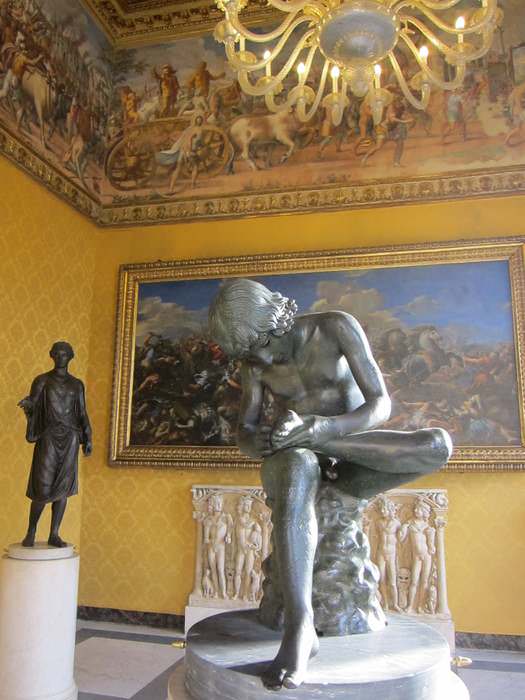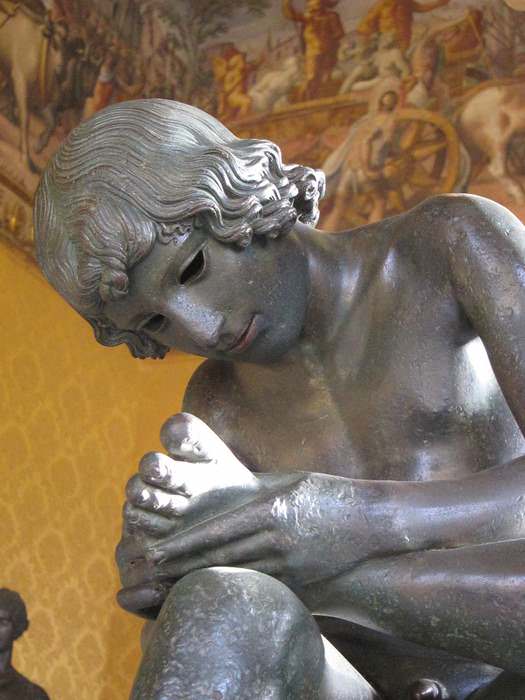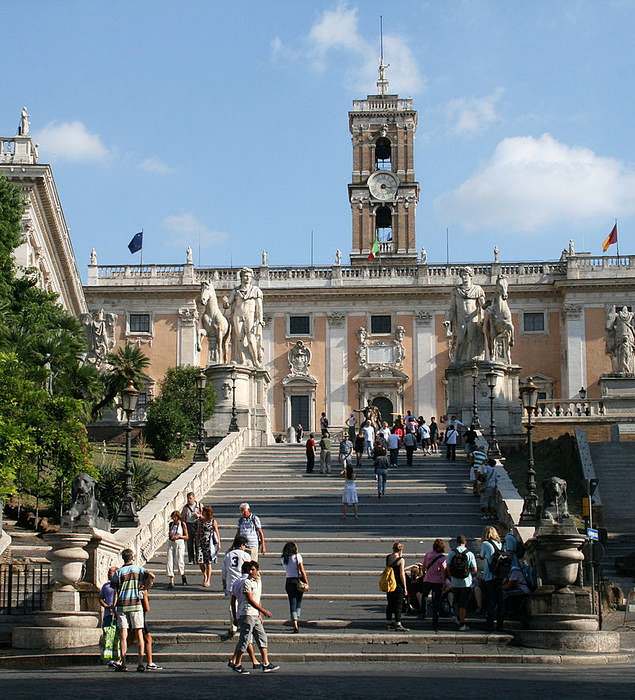I had never been to the Capitoline Museum. The first time I saw Boy with Thorn, he was a black and white projection snapping in and out of focus on the classroom wall. It was my senior year of college, and I was fulfilling my Literature and Arts general education requirement with an Italian Art History course. The classroom, a small, dusty room on the third floor of the Harvard Fogg Art Museum, was crowded with un-displayed paintings and statues. The students, mimicking the liveliness of their surroundings, slunk down in the back rows of wooden benches, themselves old enough to be on display, and quietly dozed as our professor provided a lullaby soundtrack of dates, artists, styles, and artistic periods to a parade of antique slides flickering on the front wall.

Spinario or The Boy with Thorn at the Capitoline museum in Rome
Boy with Thorn, or Spinario, the thorn-puller, in his native Italian, was just another faded photo detailing the Greco-Roman transition away from stately idealized portraiture to a period of realism and emphasis on daily, mundane events.
The statue could hardly be more mundane in its subject. A small boy sits, one leg crossed on the other and attempts to draw a thorn from the sole of his foot. And yet, I liked it. To my un-trained eye, his arms are too skinny, his hair too long and too closely plastered to his head. But his face, the intense concentration and innocence of his expression, is so animated you can almost imagine him come to life on a rock in the countryside.
The statue’s alternate name, Il Fedele, the faithful boy, comes from the legend of a shepherd boy charged with an important message for the Roman Senate who ran quickly and faithfully and only stopped to pull the painful thorn from his foot after he had completed his errand. In commemoration of his loyalty, the Senate commissioned this statue. It is a story to inspire civic-mindedness, but I prefer Spinario, the shepherd boy, unconnected with politics and politicians, sitting in his pasture.

There are copies of The Boy with Thorn throughout the world
History of Boy with Thorn
I am far from alone in liking the statue. It was highly admired in the Early Renaissance and one of the first Hellenistic bronzes to be copied. In the sixteenth century, copies were made for Kings of Spain, France, and England, and marble as well as bronze copies are currently scattered in art museums around the world. Spinario’s expression and position are thought to have influenced artists including Michelangelo, Masaccio, and Brunelleschi.
The original Spinario spent some centuries adorning the Papal Lateran Palace in Rome before he was transferred to the Capitoline Museum in the Palazzo dei Conservatori in the late 1400s. And this is where I found him.
Connecting with Spinario in The Capitoline Museum
On a weekend in Rome, having wandered Palatine Hill and daydreamed at the Coliseum, I decided at length to visit The Boy with Thorn. Unfortunately, the hotel concierge’s directions were less than direct, and I found myself taking the long route to the Capitoline Museum – including a diversion completely around Circus Maximus – such that I arrived a mere hour before closing.

Capitoline Hill from Wikipedia
An hour may be more than sufficient in an orderly, organized collection. In the Capitoline, it was madness. On its outside, the Capitoline is an impressive columned building in a campus of impressive columned buildings around the Piazza del Campidoglio, designed by Michelangelo. On the inside, the design team has taken the stance that works of art should not be displayed so much as incorporated into the architecture of a labyrinth of white marbled halls, all mirrored replicas of one another, with the result that every inch of wall and ceiling is home to some bright fresco or sculpted face, and the whole giant maze is designed for wandering, aimless immersion in beauty; not at all suited to the targeted incision I required. I was nearly sidetracked by the wonders of the Dying Gaul , Cupid and Psyche , and other impressive works.

The Dying Gaul
Adding to my troubles, Capitoline staff take the view that they should be seen and ignored and not required to actually engage with small troubles like visitors. However, after a fourth attempt to procure directions in broken Italian, and a second pantomime of pulling a thorn from my foot, one docent apparently realized it would be quicker and less publicly humiliating for us both if he simply pointed the way, and so, ten minutes before closing, I found myself in front of Spinario. Not a copy, not a print, not a slide or a photo: the original bronze. I was breathless.
Google, Wikipedia, Gutenberg’s press have placed a mass of information at our fingertips, and it is tempting to believe the world is smaller, that everything we wish to know can be learned online. But it is nice to know there are some wonders that still make the travel worthwhile, some sights no photo will equal. And, to Professor Fehrenbach: I’m sorry I fell asleep.
Written by and photos (unless noted) by Anne Siders for EuropeUpClose.com

KareninCalabria
Friday 9th of October 2015
Nice slice-of-life story, Anne. The Capitoline Museum is truly a treasure-trove, but as you say, you need a lot of time to explore it. On one visit, I was captivated by the Roman tombstones housed in the underground passageway between the buildings. While other rooms and sections with more "famous" pieces were full of visitors, I found myself alone reading the inscriptions that were the only remembrances of former chariot drivers and a flute playing slave. A fascinating place.
don krueger
Sunday 19th of July 2015
First visited this in 1957. Have been back and hope to go again. Everyone should have an hour to look, study and dream while looking at the Boy.
Marilyn
Friday 17th of July 2015
Thanks, this takes me back to the Capitoline and being stunned by the array of brilliant artworks, including The Boy With Thorn. No picture or replica can compare with seeing the original, and now I'm eager to return. I'm glad you got there before the place closed!